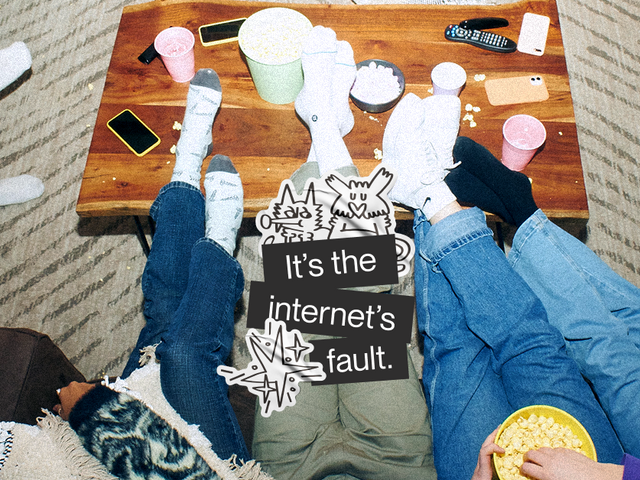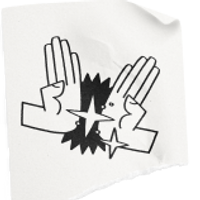Before the internet, knowing what someone was really up to meant holding a spiral-wired landline phone up to your ear until your hand cramped.
Ah, the pre-Facetime era.
Nowadays, the average Canadian spends 2 or more hours per day on social media1 and we have instant access to our friends' whereabouts—giving us the ability to question why Jess is at her ex’s… again. From Instagram stories to BeReal and even Find My Friends, it’s no doubt that we’re more digitally connected to our friends than ever before—but is that a good thing?
“I’ll log on as soon as I get home.”
My earliest memories of weaving the internet into my friendships dates back to 2009. I was in the 7th grade and finally got my parents’ permission to create an MSN account (IYKYK).
At its height, MSN attracted 350 million users worldwide monthly.2 Many of us were clocking an alarming amount of hours behind clunky desktop computers, rushing home from school to type away to our BFFs and crushes. Who wouldn’t want to share juicy gossip and mundane updates over instant messaging?
In 2009, I also joined Facebook, which was growing by nearly 100 million users every quarter.3 Soon after, Tumblr, Instagram, Twitter and Snapchat gained popularity. Even though iconic sites like Myspace were around prior, we witnessed the rise of strategic algorithms and social networking platforms, not to mention the birth of the iPhone—game-changing, right?
Well, as exciting as all of that was, it also greatly impacted our friendships, new and old.
Whether you switched schools, started a new job, moved cities or simply wanted to keep up with the people you cared about, social networking apps gave us the ability to maintain and grow friendships from different parts of our lives. With a few scrolls and clicks you could browse someone’s family vacation pics on Facebook, watch their daily lives on Snapchat or analyze their OOTDs on Instagram. It was exciting and oddly comforting to know what people in our orbit were up to.
Did social media make us less… social?
As the apps continued to evolve, gathering information no longer required effort. From our life highlights to our meals (and even our unsolicited opinions), we started to share a sense of constant virtual togetherness.
Attempting to find a balance between digital and physical connections is a trade-off though.
Over the years, I’ve asked myself: Does the existence of my friends’ social media accounts cause me to check in on them less often? Does what they post online change how I think of them offline? Do their digital presences alone make me feel like I’m up-to-date enough with their lives?
Here’s what we know for sure: Being able to see exactly where someone is on a map, while also constantly consuming their content, blurs lines of privacy and complicates friendship dynamics.4
A new wave of friendships.
Though the internet has changed how existing friends communicate with one another, it’s also made connecting with anyone from anywhere possible. With an overwhelming number of digital spaces, each one having its unique purpose, the potential to reach people we’d likely never cross paths with otherwise is more accessible than ever before.
Remember when friendships were formed by trading outfit compliments or asking if an open seat next to someone was in fact open? Semi-awkward encounters were a rite of passage in the search for quality bonds. From the lunch room of corporate offices to the comfort of local cafés, making friends blossomed from in-person interaction first, and social connection second.5
Today, there’s no denying the power of 15-second videos and online interactions. The internet has become a gathering place for like-minded people, giving us access to countless niches and communities. For some, meaningful connections are made online first, then in real life second.
Personally, the internet has given me some of my closest friends to date, and I know I’m not alone in that.
Take Marissa Meizz (founder of the movement No More Lonely Friends), for example. After her TikTok video went viral, she managed to blur the lines between online and offline, bringing together thousands of people in several cities by leveraging the power of the internet.6
I used a group on Facebook to meet up with women travellers when I was solo backpacking through Asia. I used TikTok to find like-minded creatives my age after moving to a new city. I used BumbleBFF to set up café outings with fellow coffee-lovers.
Striving for an intentional balance.
It’s been 14 years since I logged onto MSN for the first time, and today I still rely on the internet to send instant messages to the people I love most. I rely on the internet to see my high school classmate’s engagement photos and my best friend’s job promotions. But beyond that, as I continue to navigate making new friends in my 20s, I regularly use it to find and foster community.
Though the internet may have complicated how we show up in our friendships, it’s also proven to be a place where we can authentically share who we are with the world.
If we can embrace and utilize the internet as a tool to bring us closer to the people we care about, without taking away from cherishing the memories we make off-screen, we have the potential to deepen our existing connections and spark new ones too.








